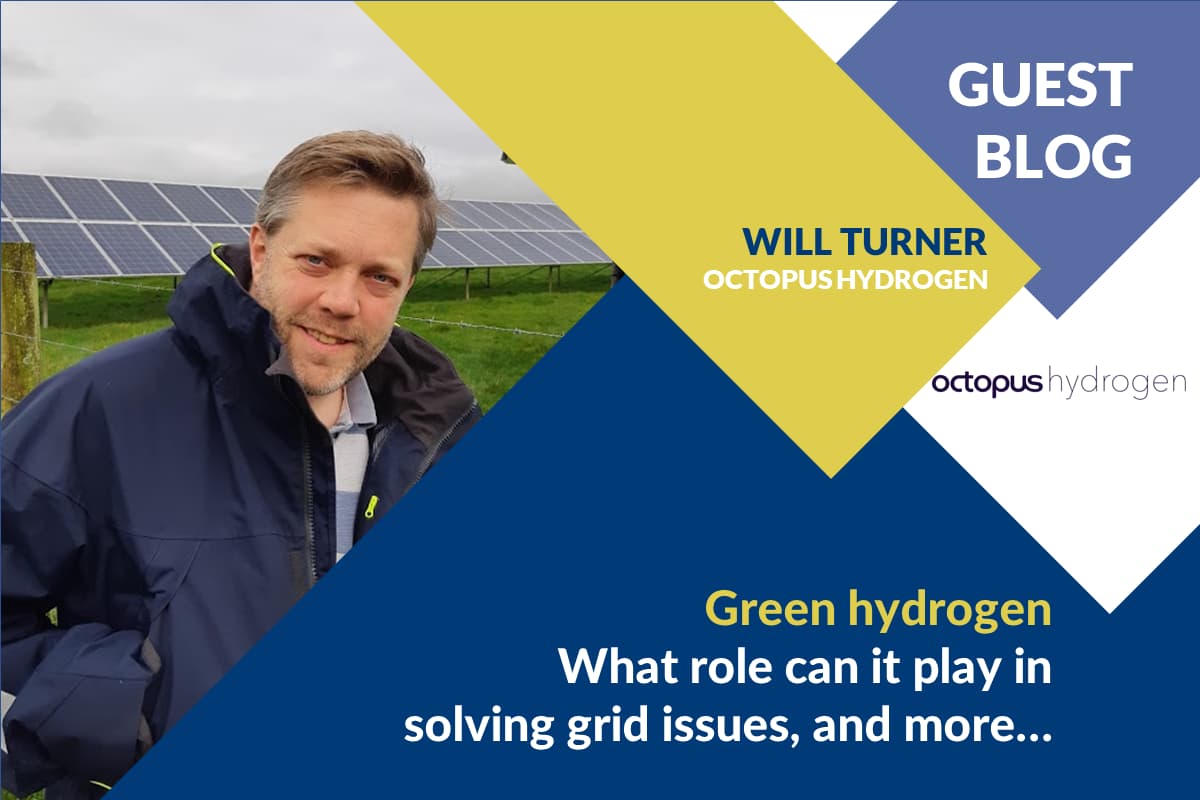The NSIP threshold change from 50MW DC to AC, and solar farm design considerations
In September 2021, an updated Draft National Policy Statement for Renewable Energy Infrastructure (EN-3) was released which finally clarified that inverter power (i.e. the AC output from a solar farm) would be used to define the 50MW boundary between projects that follow the local authority planning process and those required to be processed as (Nationally Significant Infrastructure Projects (NSIP). This meant that projects which were originally planned or submitted based on a 50MW DC capacity limit could now potentially be increased to 70MW DC or above and still be processed under the local planning process.
Given the associated impact on our clients’ decision-making – on what connections they apply for and how they utilise the capacity they secure or acquire – we asked Mike Carter, the owner’s engineering lead at Skyray, to comment on the opportunities of this announcement and indeed the latest trends in large scale Solar PV in the UK.
Hugh: First of all, can you tell me a bit about Skyray?
Mike: Skyray is involved in the design and construction supervision of Solar PV projects including those with integrated battery storage. We came into existence because our parent company – Everoze, who are one of the leading Technical Advisers for clients purchasing renewable projects – had seen so many problems in constructed solar farms that could (and indeed should) have been solved at the design or construction phases but were not.
At the same time, more long-term investors were becoming involved with projects during development and pre-construction, and were looking for support to ensure that projects would be designed and built with a focus on long-term yield and easy operation rather than a more simplistic drive for reduced CAPEX.
We are currently around 20 people in the UK, France and Portugal and our main customers are long-term investors, developers and IPPs who we support with a) independent design works in early-stage projects and b) with tendering, contract support, design reviews and construction management in ready to build projects.
Hugh: And are you involved in UK projects?
Mike: Yes indeed, as well as being involved in design and development (including some NSIP solar projects), we are the Owner’s Engineer for a 70MW scheme which is about to start construction.
Hugh: What is your take on the Updated Draft EN-3?
Mike: I think there could be an opportunity to increase project sizes, not just for projects where sufficient space was already available before this change came about but also for projects where space is constrained. To understand this better, we looked at a real project and compared the potential installed capacity for a design that might have been done back in early 2016 (before construction paused following the expiry of ROCS) and compared this to a newer design using the most up-to date equipment and with a lower PV module slope angle. To keep shading losses similar, we kept the same shading angle. Surprisingly, this resulted in a near 50% increase in installed capacity.
Hugh: Wow. What was behind the big increase?
Mike: The biggest change was in module capacity which has developed significantly over the last few years. For the latest design, we used a 600Wp bi-facial module while the comparison (2016 design) was based on a 280Wp module which was popular at that time. The huge change in PV module wattage is explained on one side by the increase in physical size of PV modules over the period but also by their significant increase in power density.
The other main change was to reduce the slope from 25 degrees (a relatively common inclination back in 2016) to 15 degrees and the use of much larger tables with 5 in landscape rather than 2 in portrait as originally considered. As described above, we kept the same shading angle in both cases and maintained the same maximum height requirements.
Hugh: With this compression, there must have been a reduction in efficiency?
Mike: We originally expected this as well, but having run both designs through PVsyst (the state of the art energy yield prediction system used for bankable energy assessments) there was actually a small increase in the specific yield (MWh/MWp installed) due primarily to lower IAM losses and the use bifacial PV Modules.
Our simulations assumed a similar DC to AC power ratio for both designs so the clipping losses for the 2016 design may have been overstated but this would not have been particularly significant.
Hugh: Are there any disadvantages to this design or would it be easy to optimise any project along these lines?
Mike: The biggest issue is likely to be ground cover ratio (GCR) which the change in installed capacity and slope angle increases quite significantly. From our experience, planning authorities have very different approaches to GCR so it’s not an adjustment to be undertaken without consideration and it might therefore be prudent to submit a non-material amendment in advance of pursuing such a change.
It’s worth adding that this is one advantage with working with an independent designer since, our approach is to design what the Client wants – and we are technology neutral – whereas an EPC Contractor tends to have their own preferred way of working.
Hugh: Are you asked about other options for sites? For example what about trackers?
Mike: The question about trackers comes up all the time. These are extremely common in Southern Europe and indeed in Portugal, where we are very active, single axis trackers have become the norm. For interest we also simulated the site described above with trackers using the latest technology and components and what would be considered standard installation arrangements in Southern Europe. The results were actually quite disappointing with a lower total installed capacity achieved than the 2016 design. The specific yield (MWh/MWp) increased significantly but the total yield (in MWh) was still 27% below that achieved using a fixed structure new design.
The benefit with single axis trackers reduces the further from the equator that you are because the increase in transposition ratio (the amount of sunlight seen on the plane of the PV Modules as they rotate compared to the horizontal) in the South of Spain is higher for trackers than in the UK.
One interesting result from that simulation was that the tracker design provided more energy at the beginning and end of the day which, depending on energy prices, might be interesting in the future. For now though, we suspect trackers will remain a niche product for the UK, potentially being installed on projects with a steep southern slope or that are grid constrained and have large areas of cheap land available.
Hugh: And what about fixed East-West installations?
Mike: We didn’t actually model this option. Such installations (where PV modules are installed on large tables with very low slopes) certainly have the highest power density (MWp/Ha) but the ground cover ratio (GCR) is really high which can lead to a danger of ground sterilisation.
There are some options where this could be attractive (for example we investigated such a design for a disused runway) but the potential negative impact on biodiversity means that we are not generally asked about these designs for greenfield sites.
If biodiversity is of interest to your readers, they can also see the previous Roadnight Taylor guest blog on the importance of increasing the biodiversity of solar farms for developers and other stakeholders with Ellie van der Heijden at Everoze with whom we work closely on this point.





